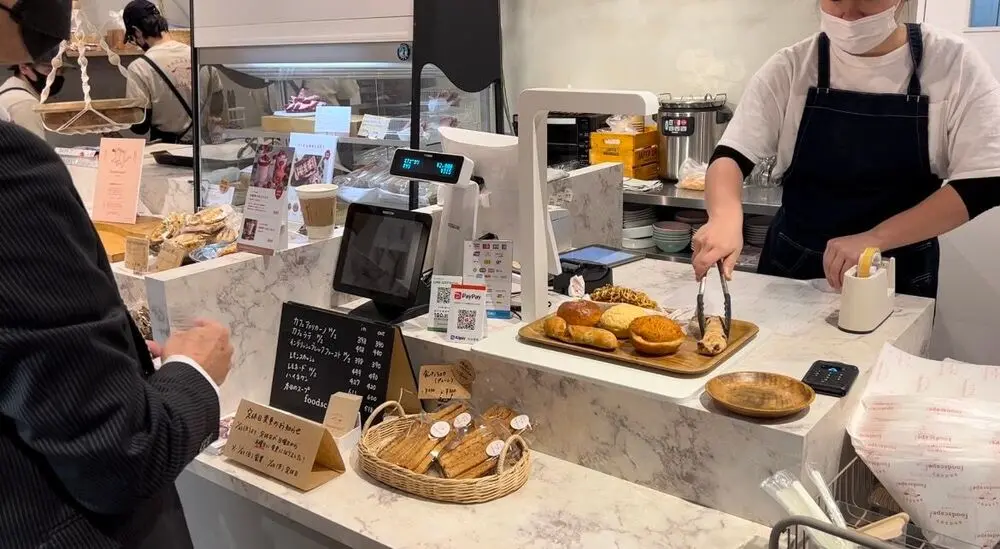
5 Cutting-Edge Image Recognition Solutions in Retail
May 17, 2024
Nowadays, technology has become the cornerstone of success for retailers, assisting retailers to enhance operational efficiency and elevate the shopping experience. Among these technologies, image recognition has garnered increasing attention from retailers and keeps revolutionizing the industry.
This article explores how image recognition is used in retail, to name a few, showing how it plays a key role in making the industry smarter.
Real-time Shelf Monitoring
Typically, store staff spend significant time and effort in checking shelf product, ensuring timely restocking and optimal product placement. Although this task may seem trivial, in an era of labor shortages, it poses a major challenge for retailers. According to NielsenIQ, US retailers incurred staggering losses of $820 billion in 2021 due to shelf vacancies and product shortages.1
With image recognition technology, shelf monitoring can now be effortlessly automated through human-computer collaboration. Store staff are freed from constant checking, as the recognition system automatically alerts staff when restocking is needed. This technology enables retailers to allocate the limited manpower more efficiently.

Inventory Checking
Inventory management, similar to shelf monitoring, now presents an opportunity for automation through image recognition technology.
Inventory checking requires substantial manpower for counting product quantities or scanning product barcodes individually. A survey conducted by SML Group revealed that 48% of US retailers identified “out-of-stock items” as a major operational challenge.1 Leveraging image recognition, retailers can streamline inventory checking processes using the computer’s visual capabilities. The recognition system will automatically notify operators when inventory is insufficient, saving manpower costs, improving operational efficiency, and reducing error rates.
For supermarkets with a wide range of retail items, this marks a meaningful milestone. In an era defined by labor shortages, automation empowers businesses to optimize workforce allocation, freeing up human resources to focus on more valuable tasks or services that only humans can provide.
Store Layouts, Product Placement, Foot Traffic, and Customer Behavior Analysis
Unlike online e-commerce platforms, which use powerful traffic analysis tools like Google Analytics, brick-and-mortar retail stores do not have access to such resources. Instead, they heavily rely on staff to remember foot traffic and evaluate product placement.
This means that store layout and product placement are often organized based solely on the intuition and experience of the staff. Without concrete data, it is challenging to measure the effect of any changes made to store layouts or product displays.
Thankfully, with image recognition technology, retailers can now gain deeper insights into customer behavior in-store. By capturing and analyzing everything from how customers move around the store to how they interact with products, retailers can extract invaluable data to inform strategic decisions. This data-driven approach not only enhances the overall shopping experience but also effectively drives more sales.

Order Inspection
Just like factories use automated optical inspection for quality control, the retail industry also needs similar technology for product inspection. While the retail sector may not require the same level of precision as manufacturing, ensuring accurate order fulfillment remains crucial.
Recently, retailers have started to explore image recognition technology as an addition to manual inspections, allowing computers to take a second look to verify that goods match orders.
Visual Checkout
Image recognition technology can also be applied in the checkout process, especially for identifying non-barcode items such as bakery products or prepared meals.
Traditional checkout process requires staff to visually identify items and manually enter them into the POS checkout system.
With image recognition technology, staff can now delegate item recognition to computers, identifying multiple items within a second and speeding up the checkout process. Additionally, for items with barcodes, checkout efficiency can be enhanced compared to scanning each barcode individually.
However, in real-world applications, solely relying on image recognition technology may not be able to handle all situations. Take bentos, for example, where each piece of pork may vary in shape, texture, and color, and the placement of side dishes for the same bento may differ. Similarly, for bread, even the same type of bread may exist slight differences, such as baking color, shape, and size. Likewise, even for the same packaged snack, the shape at each checkout may vary.
To ensure smooth usage of image recognition in real-world checkout scenarios, Viscovery, a provider of image recognition solutions, integrates computer vision with AI and deep learning technologies. This training equips computers with the ability to mimic human cognition, enabling them to accurately identify products despite natural variations in appearance.
Numerous retailers have embraced this AI-powered image recognition system to streamline checkout processes, including bakery chains like I Jy Sheng and RT Baker House in Taiwan, as well as various bakeries and pastry shops in Japan. Moreover, Hi Noodle, a Chinese noodle shop under Haidilao, in Singapore, and micromarkets within corporate offices in Japan have adopted this technology to offer self-checkout services.
The use of image recognition in retail continues to expand, driving improvements in operational efficiency and customer satisfaction. With the integration of AI, this technology will keep reshaping and transforming the retail landscape.
To learn more about Viscovery’s Visual Checkout, please visit Visual Checkout.

(Photo by Viscovery)
(Featured image: Photo by Shutterstock)
[References]
1 Baldwin, Shawn. “How A.I.-powered robots are changing retail.” CNBC, 22 April 2023, https://www.cnbc.com/2023/04/22/how-ai-powered-robots-are-changing-retail.html.

